Trans World Airlines (TWA) entered the 1960s as one of America’s Big Four domestic airlines in terms of revenue passengers carried and revenue passenger miles flown (the other three were American, Eastern, and United).
With a respected name and a proud reputation, TWA in the 1960s boasted a network that stretched from coast to coast and an international system that crossed the Atlantic, serving major cities in Europe, North Africa, the Middle East, India, and Southeast Asia. Like its competitors, it operated several flights with brand new four-engine jets, while most services were still covered by propeller-driven types.
Everything seemed bright and promising for TWA on the surface.
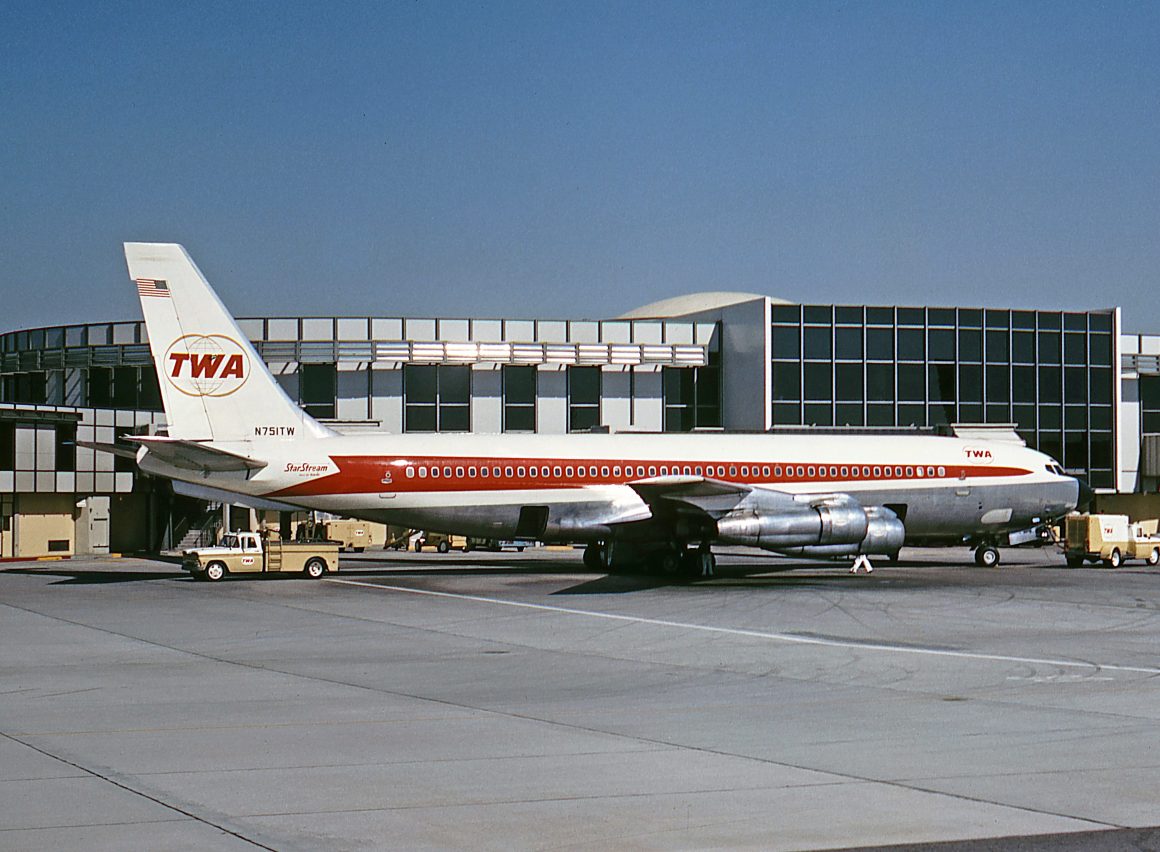
CORPORATE TROUBLES FOR TWA
Behind the scenes, not everything was so rosy. The enigmatic Howard Hughes owned most of TWA’s stock. Although he was not the president of the company, not on the board of directors, nor in the company’s employ in any position, he dictated policy from his unseen perch as the ‘owner’ of the company. The area in which he exerted the most influence was aircraft selection and purchase.
Hughes Tool Company (Toolco), the firm through which most of his financial transactions were funneled, would purchase aircraft, then lease them to TWA. When Toolco encountered financial difficulties, the aircraft manufacturers did not get paid, and the jets that TWA had on order – far too few to match its competitors – were delayed in their delivery. TWA officials found it more and more challenging to get in touch with Hughes as he interacted alone with the manufacturers who were building the airline’s jetliners.
With Toolco in debt, TWA’s aircraft orders languished in limbo. Even the Civil Aeronautics Board (CAB) was concerned that Howard Hughes was not managing affairs in the best interest of Trans World Airlines. The company desperately needed the 30 Convair 880 jetliners that Toolco had ordered, supposedly meant for TWA.
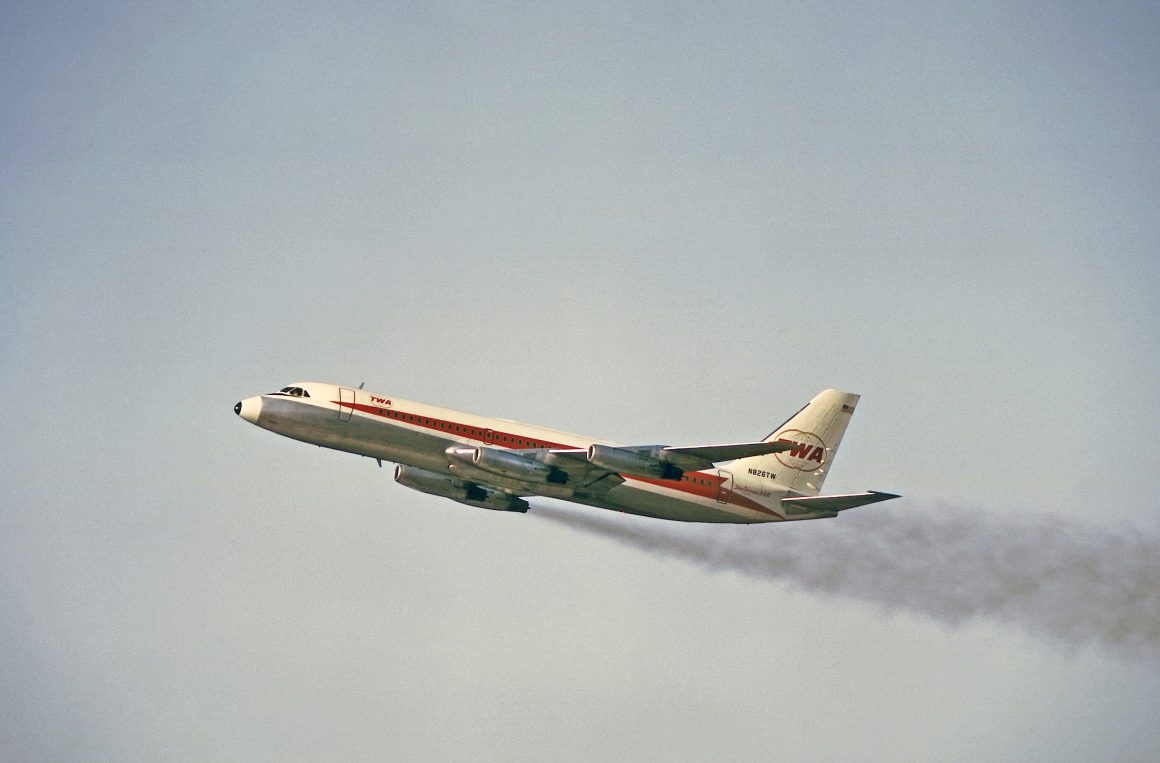
TRAGEDY STRIKES THE AIRLINE
TWA soldiered on, adding a handful of Boeing 707s to its fleet of several dozen Constellations and aging Martin 404s. Then, the company suffered an accident that was all too reminiscent of a similar event four and a half years prior.
On 16 December 1960, a TWA L-1049A Super Constellation (N6907C) collided in-flight with a United Air Lines Douglas DC-8 jetliner as both aircraft were preparing to land at different New York City airports. A total of 140 people lost their lives in the disaster as the remnants of the Constellation fell onto Miller Field on Staten Island while the DC-8 deposited its remains in Brooklyn. It was the worst commercial air disaster at the time. A similar event in 1956, involving a TWA L-1049 and a United DC-7 above the Grand Canyon, had claimed 128 lives and had been the worst commercial air disaster up to that point.
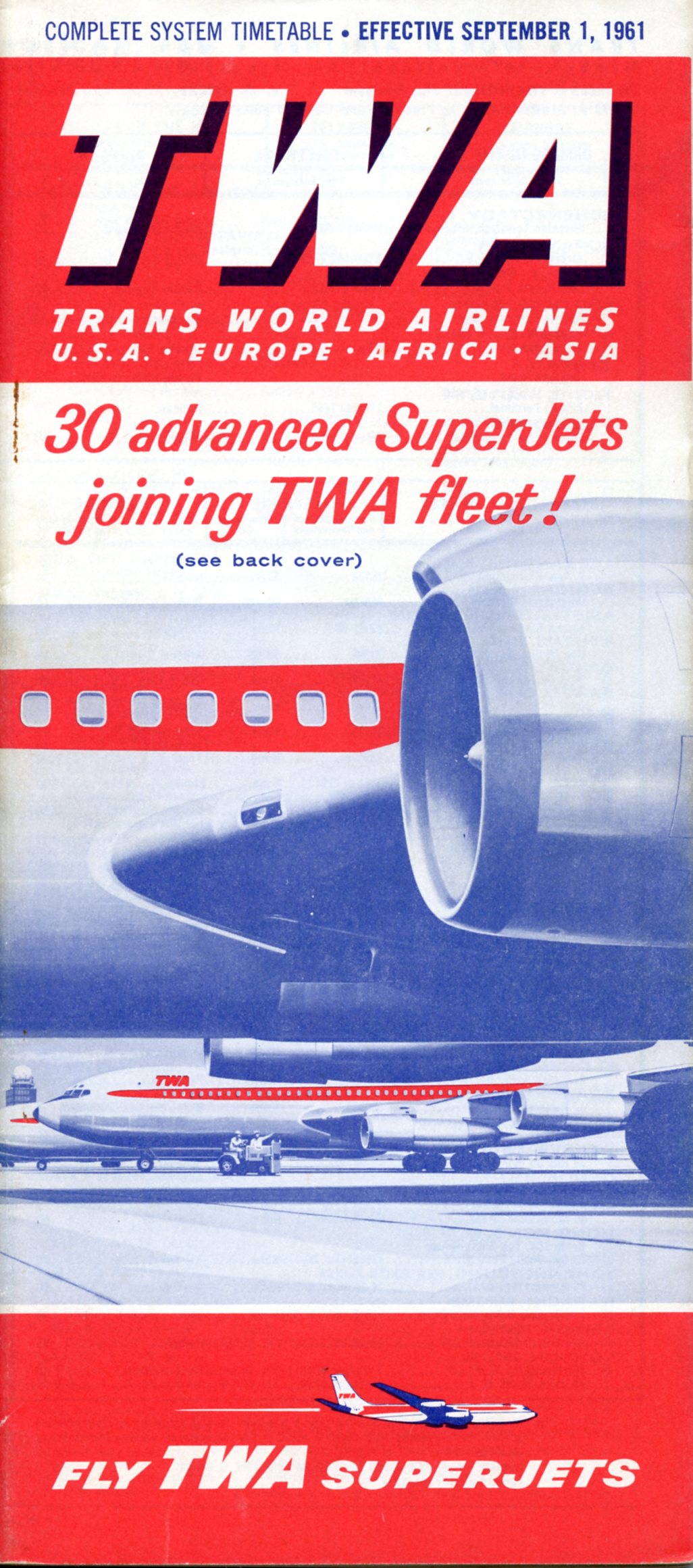
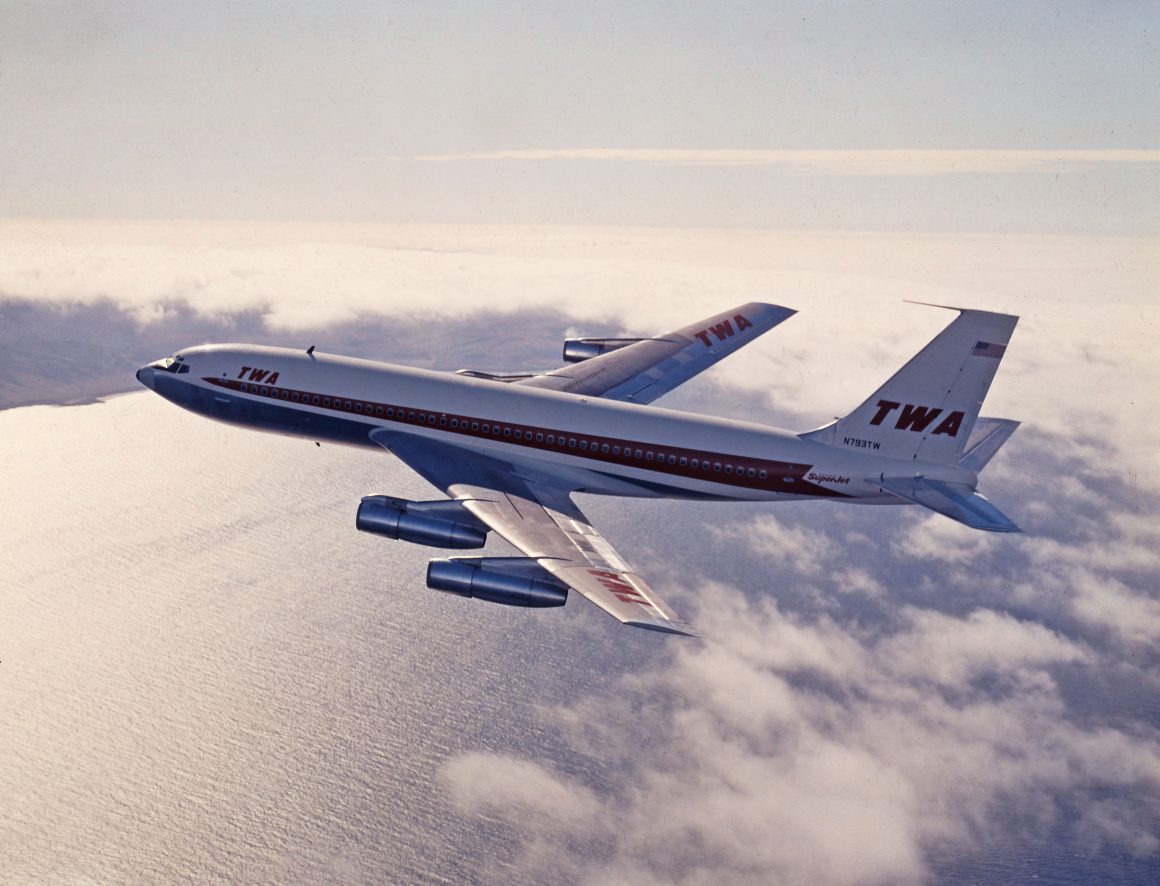
A NEW DAY AT TWA
With Hughes still uncooperative, the company’s financiers and the CAB forced his stock holdings into a voting trust. Howard Hughes had lost control of Trans World Airlines.
Delivery of the Convair 880s finally began. They entered service with TWA on 12 January 1961.
Charles C. Tillinghast, Jr., was recruited from Bendix Corporation and was installed as TWA’s chief executive on 17 April 1961.
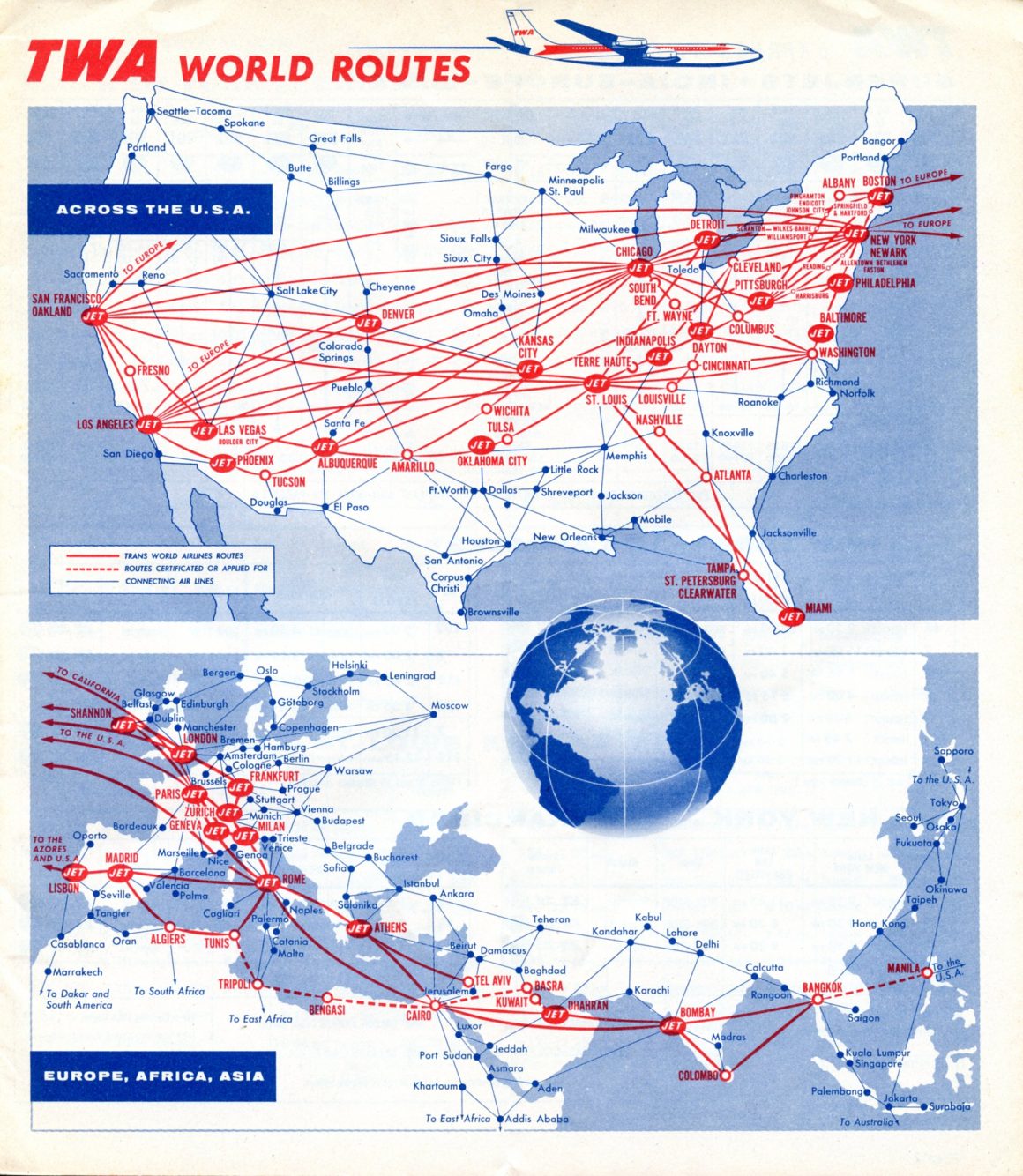
Four Boeing 720B Fan Jets were leased from the manufacturer to add to TWA’s fleet. Tillinghast negotiated with Boeing to purchase 30 more 707s: 20 707-131Bs for domestic use and 10 707-331B Intercontinental models for international service.
A new slogan graced the company’s advertising: “Nationwide, Worldwide, depend on TWA.”

TWA JETS FOR THE SHORT HAUL
When Howard Hughes still held the purse strings, TWA had seriously considered ordering the French-built Sud Aviation Caravelle to handle medium-range flights on its domestic system. Twenty of the type had been ordered by TWA’s competitor, United Air Lines. The improbability of finding financing at the time put an end to the possibility of a Caravelle purchase for TWA.
The decision was made to purchase Boeing’s 727 to satisfy the requirements of medium and short-haul routes. The first of TWA’s 727-31s entered service on 1 June 1964. The -31 models would be joined by stretched Boeing 727-231s in 1968.
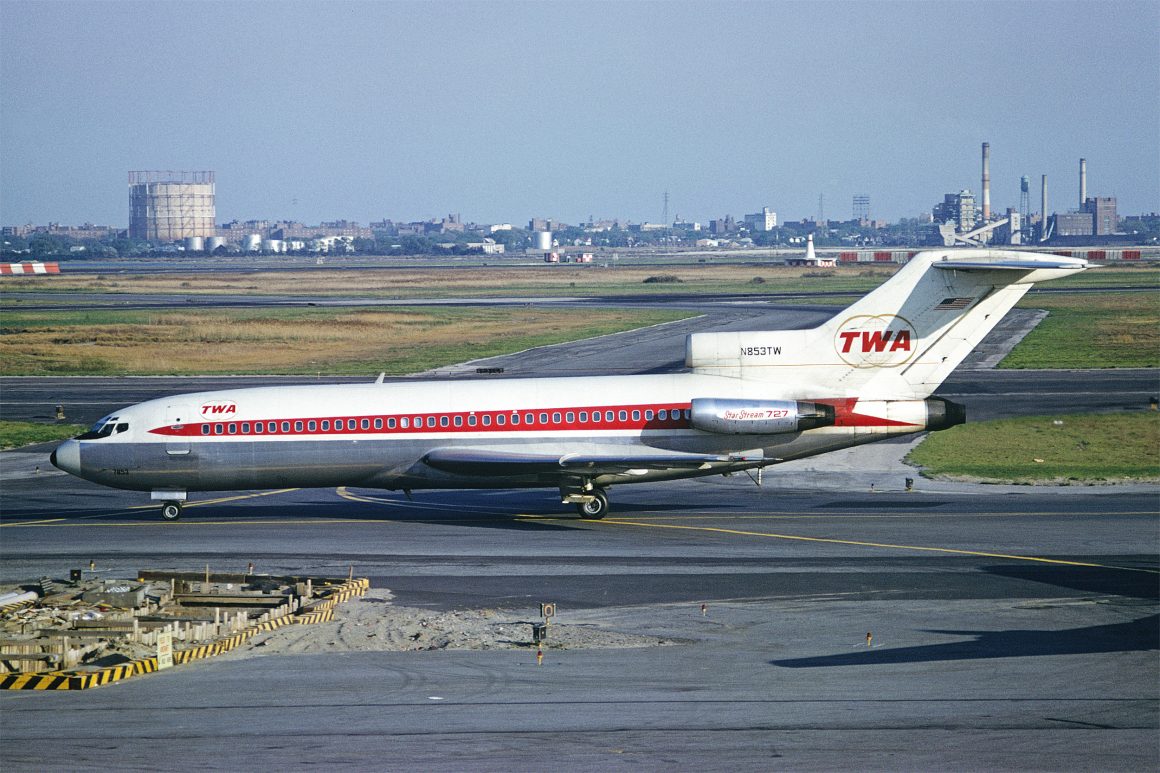
To round out the need for short-haul types, the company also ordered twenty Douglas DC-9s, the first of which entered service with TWA on 17 March 1966. These were -14 and -15 models, which continued to work for the airline throughout the next decade.
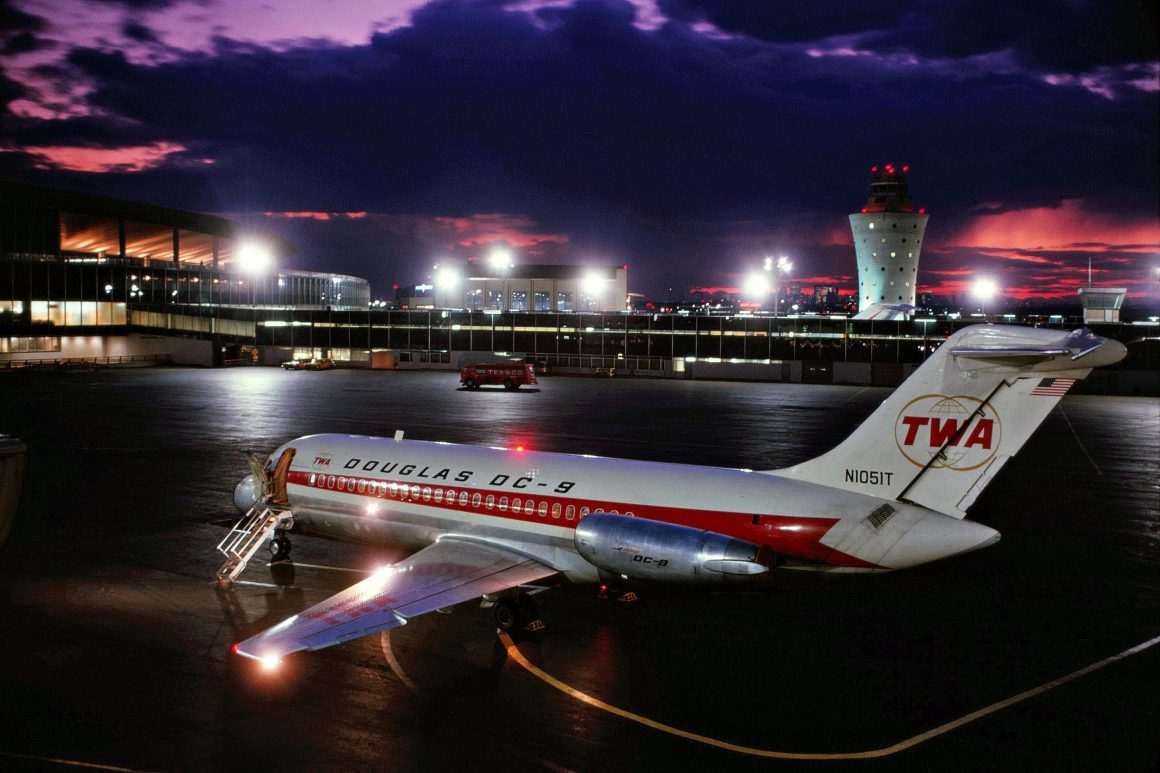
TWA’s fleet was now sufficiently modernized for the airline to be at its competitive best, and the company was making money. Truly marking the end of an era, TWA operated its last scheduled Lockheed Constellation flight on 6 April 1967. The airline now boasted an all-jet fleet.
A LEGEND LEAVES: FAREWELL TO HOWARD HUGHES
In 1964, the CAB ruled that Howard Hughes could regain his control of TWA, but first, he had to divest himself of his investment in Northeast Airlines, which he did. This was followed by court challenges to the CAB’s ruling that kept Hughes from participating in the company’s operation. He finally sold all of his TWA stock in May 1966, ending his relationship with the airline that he had nurtured since 1939.

Another new slogan was adopted: “Welcome to the world of Trans World Airlines.”
TWA GOES AROUND THE WORLD
TWA inaugurated its ‘Round the World’ service on 1 August 1969. The CAB had awarded the company authority to serve Hawaii from Los Angeles, continuing to Guam, Okinawa, Taipei, and Hong Kong, which was the terminal point of TWA’s routes stretching around the globe from the opposite direction.
In 1969, TWA surpassed Pan Am in the number of passengers carried across the North Atlantic for the first time. TWA was truly back on top after several bleak years during the early part of the decade.

One more notable event would take place before the end of 1969. On 31 December, TWA took delivery of its first Boeing 747 “jumbo jet.” The era of the wide-body airliner was about to begin, and Trans World Airlines was ready for the new decade.
